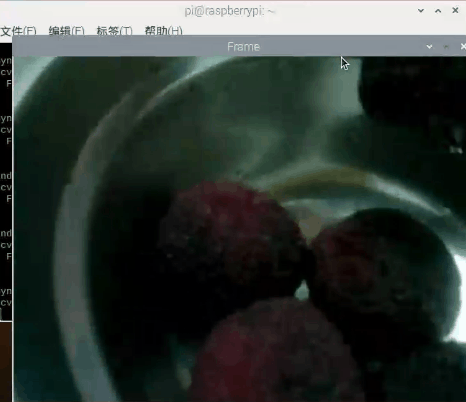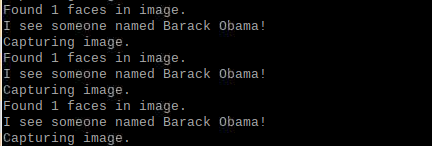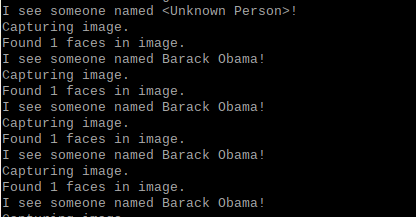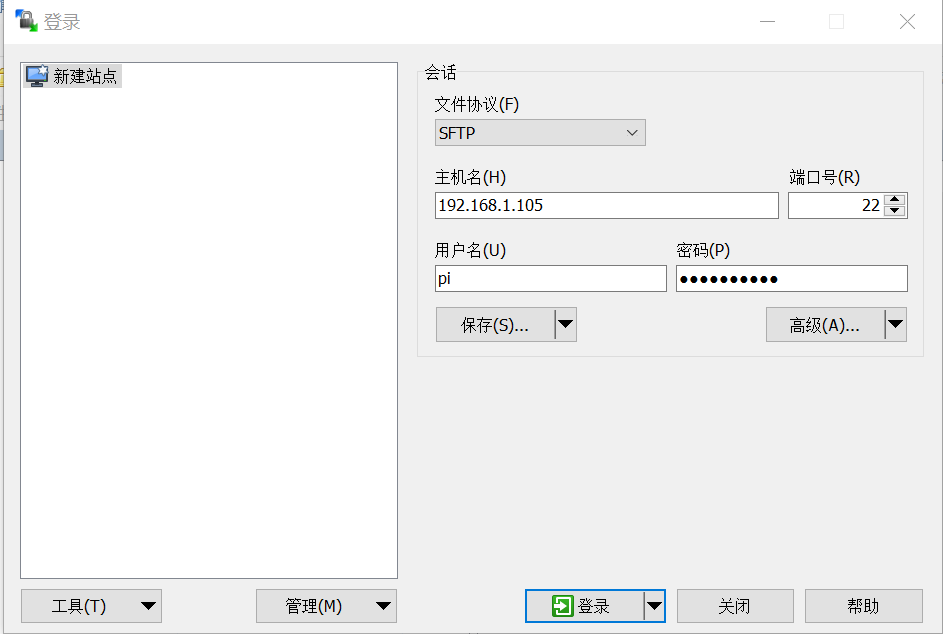2020系统综合实践 第7次实践作业 11组
1.在树莓派中安装opencv库
1.1 安装依赖
sudo apt-get update && sudo apt-get upgrade
sudo apt-get install build-essential cmake pkg-config
sudo apt-get install libjpeg-dev libtiff5-dev libjasper-dev libpng12-dev
sudo apt-get install libavcodec-dev libavformat-dev libswscale-dev libv4l-dev
sudo apt-get install libxvidcore-dev libx264-dev
sudo apt-get install libgtk2.0-dev libgtk-3-dev
sudo apt-get install libatlas-base-dev gfortran
sudo apt-get install python2.7-dev python3-dev
1.2 下载OpenCV源码
- 查看老师博客时发现旧版本问题较多,使用较新版本
cd ~
wget -O opencv.zip https://github.com/Itseez/opencv/archive/4.1.2.zip
unzip opencv.zip
wget -O opencv_contrib.zip https://github.com/Itseez/opencv_contrib/archive/4.1.2.zip
unzip opencv_contrib.zip
1.3 安装pip
wget https://bootstrap.pypa.io/get-pip.py
sudo python get-pip.py
sudo python3 get-pip.py
1.4 安装Python虚拟机
sudo pip install virtualenv virtualenvwrapper
sudo rm -rf ~/.cache/pip
- 配置~/.profile
sudo nano ~/.profile
export WORKON_HOME=$HOME/.virtualenvs
export VIRTUALENVWRAPPER_PYTHON=/usr/bin/python3
source /usr/local/bin/virtualenvwrapper.sh
export VIRTUALENVWRAPPER_VIRTUALENV=/usr/local/bin/virtualenv
export VIRTUALENVWRAPPER_ENV_BIN_DIR=bin
- 使配置生效
source ~/.profile
- 使用python3安装虚拟机
mkvirtualenv cv -p python3
- 使配置生效并进入虚拟机,每次重新进入虚拟机都要键入
source ~/.profile && workon cv
- 安装numpy
pip install numpy
1.5 编译OpenCV
cd ~/opencv-4.1.2/
mkdir build
cd build
cmake -D CMAKE_BUILD_TYPE=RELEASE \
-D CMAKE_INSTALL_PREFIX=/usr/local \
-D INSTALL_PYTHON_EXAMPLES=ON \
-D OPENCV_EXTRA_MODULES_PATH=~/opencv_contrib-4.1.2/modules \
-D BUILD_EXAMPLES=ON ..
- 查看版本
- 编译前增大交换空间CONF_SWAPSIZE=1024
sudo nano /etc/dphys-swapfile #虚拟机中sudo才可以修改
- 开始编译
sudo /etc/init.d/dphys-swapfile stop
sudo /etc/init.d/dphys-swapfile start
make -j4 #开始编译
1.6 安装OpenCV
sudo make install
sudo ldconfig
- 查看
ls -l /usr/local/lib/python2.7/dist-packages/
ls -l /usr/local/lib/python3.7/site-packages/
cd ~/.virtualenvs/cv/lib/python3.7/site-packages/
ls
ln -s /usr/local/lib/python3.7/site-packages/cv2 cv2
- 验证安装结果
source ~/.profile
workon cv
python
2.使用opencv和python控制树莓派的摄像头
参考教程:还是可以参考 Adrian Rosebrock的 Accessing the Raspberry Pi Camera with OpenCV and Python;跑通教程的示例代码(有可能要调整里面的参数)
- 激活cv虚拟环境
source ~/.profile
workon cv
- 安装picamera
pip install "picamera[array]"
- 使用Python和OpenCV访问Raspberry Pi的单个映像
打开一个新文件,命名test_image.py,然后插入以下示例代码:
# import the necessary packages
from picamera.array import PiRGBArray
from picamera import PiCamera
import time
import cv2
# initialize the camera and grab a reference to the raw camera capture
camera = PiCamera()
rawCapture = PiRGBArray(camera)
# allow the camera to warmup
time.sleep(0.1)
# grab an image from the camera
camera.capture(rawCapture, format="bgr")
image = rawCapture.array
# display the image on screen and wait for a keypress
cv2.imshow("Image", image)
cv2.waitKey(0)
- 运行py文件
python test_image.py
- 使用Python和OpenCV访问Raspberry Pi的视频流
打开一个新文件,命名test_video.py,然后插入以下示例代码:
# import the necessary packages
from picamera.array import PiRGBArray
from picamera import PiCamera
import time
import cv2
# initialize the camera and grab a reference to the raw camera capture
camera = PiCamera()
camera.resolution = (640, 480)
camera.framerate = 32
rawCapture = PiRGBArray(camera, size=(640, 480))
# allow the camera to warmup
time.sleep(0.1)
# capture frames from the camera
for frame in camera.capture_continuous(rawCapture, format="bgr", use_video_port=True):
# grab the raw NumPy array representing the image, then initialize the timestamp
# and occupied/unoccupied text
image = frame.array
# show the frame
cv2.imshow("Frame", image)
key = cv2.waitKey(1) & 0xFF
# clear the stream in preparation for the next frame
rawCapture.truncate(0)
# if the `q` key was pressed, break from the loop
if key == ord("q"):
break
- 运行py文件
python test_video.py
3.利用树莓派的摄像头实现人脸识别
人脸识别有开源的 python库face_recognition,这当中有很多示例代码,要求跑通 face_recognition的示例代码 facerec_on_raspberry_pi.py以及 facerec_from_webcam_faster.py
- 安装所需库
pip install dlib
pip install face_recognition
pip install numpy
- 文件夹内放入相关文件
facerec_on_raspberry_pi.py
import face_recognition
import picamera
import numpy as np
# Get a reference to the Raspberry Pi camera.
# If this fails, make sure you have a camera connected to the RPi and that you
# enabled your camera in raspi-config and rebooted first.
camera = picamera.PiCamera()
camera.resolution = (320, 240)
output = np.empty((240, 320, 3), dtype=np.uint8)
# Load a sample picture and learn how to recognize it.
print("Loading known face image(s)")
obama_image = face_recognition.load_image_file("obama_small.jpg")
obama_face_encoding = face_recognition.face_encodings(obama_image)[0]
# Initialize some variables
face_locations = []
face_encodings = []
while True:
print("Capturing image.")
# Grab a single frame of video from the RPi camera as a numpy array
camera.capture(output, format="rgb")
# Find all the faces and face encodings in the current frame of video
face_locations = face_recognition.face_locations(output)
print("Found {} faces in image.".format(len(face_locations)))
face_encodings = face_recognition.face_encodings(output, face_locations)
# Loop over each face found in the frame to see if it's someone we know.
for face_encoding in face_encodings:
# See if the face is a match for the known face(s)
match = face_recognition.compare_faces([obama_face_encoding], face_encoding)
name = "<Unknown Person>"
if match[0]:
name = "Barack Obama"
print("I see someone named {}!".format(name))
- 运行代码,将摄像头对准照片可以看到识别成功
facerec_from_webcam_faster.py
import face_recognition
import cv2
import numpy as np
# Get a reference to webcam #0 (the default one)
video_capture = cv2.VideoCapture(0)
# Load a sample picture and learn how to recognize it.
obama_image = face_recognition.load_image_file("obama.jpg")
obama_face_encoding = face_recognition.face_encodings(obama_image)[0]
# Load a second sample picture and learn how to recognize it.
biden_image = face_recognition.load_image_file("biden.jpg")
biden_face_encoding = face_recognition.face_encodings(biden_image)[0]
# Create arrays of known face encodings and their names
known_face_encodings = [
obama_face_encoding,
biden_face_encoding
]
known_face_names = [
"Barack Obama",
"Joe Biden"
]
# Initialize some variables
face_locations = []
face_encodings = []
face_names = []
process_this_frame = True
while True:
# Grab a single frame of video
ret, frame = video_capture.read()
# Resize frame of video to 1/4 size for faster face recognition processing
small_frame = cv2.resize(frame, (0, 0), fx=0.25, fy=0.25)
# Convert the image from BGR color (which OpenCV uses) to RGB color (which face_recognition uses)
rgb_small_frame = small_frame[:, :, ::-1]
# Only process every other frame of video to save time
if process_this_frame:
# Find all the faces and face encodings in the current frame of video
face_locations = face_recognition.face_locations(rgb_small_frame)
face_encodings = face_recognition.face_encodings(rgb_small_frame, face_locations)
face_names = []
for face_encoding in face_encodings:
# See if the face is a match for the known face(s)
matches = face_recognition.compare_faces(known_face_encodings, face_encoding)
name = "Unknown"
# # If a match was found in known_face_encodings, just use the first one.
# if True in matches:
# first_match_index = matches.index(True)
# name = known_face_names[first_match_index]
# Or instead, use the known face with the smallest distance to the new face
face_distances = face_recognition.face_distance(known_face_encodings, face_encoding)
best_match_index = np.argmin(face_distances)
if matches[best_match_index]:
name = known_face_names[best_match_index]
face_names.append(name)
process_this_frame = not process_this_frame
# Display the results
for (top, right, bottom, left), name in zip(face_locations, face_names):
# Scale back up face locations since the frame we detected in was scaled to 1/4 size
top *= 4
right *= 4
bottom *= 4
left *= 4
# Draw a box around the face
cv2.rectangle(frame, (left, top), (right, bottom), (0, 0, 255), 2)
# Draw a label with a name below the face
cv2.rectangle(frame, (left, bottom - 35), (right, bottom), (0, 0, 255), cv2.FILLED)
font = cv2.FONT_HERSHEY_DUPLEX
cv2.putText(frame, name, (left + 6, bottom - 6), font, 1.0, (255, 255, 255), 1)
# Display the resulting image
cv2.imshow('Video', frame)
# Hit 'q' on the keyboard to quit!
if cv2.waitKey(1) & 0xFF == ord('q'):
break
# Release handle to the webcam
video_capture.release()
cv2.destroyAllWindows()
- 识别成功
4.结合微服务的进阶任务
使用微服务,部署 opencv的 docker容器(要能够支持 arm),并在 opencv的 docker容器中跑通(3)的示例代码 facerec_on_raspberry_pi.py
选做:在 opencv的 docker容器中跑通步骤(3)的示例代码facerec_from_webcam_faster.py
部署opencv的docker容器
- 脚本安装docker
sudo curl -sSL https://get.docker.com | sh
- 加用户到docker组,重新登陆生效
sudo usermod -aG docker pi
exit && ssh pi@raspiberry
- 查看版本
docker --version
- 配置docker的镜像加速
sudo nano /etc/docker/daemon.json
- 重启生效
service docker restart
- 拉取arm可用的docker镜像
docker pull sixsq/opencv-python
- 进入容器并安装所需库
docker run -it sixsq/opencv-python /bin/bash
pip install "picamera[array]" dlib face_recognition
- 安装成功后退出容器并commit
docker commit [22ee2e36d2e2] face_recognition_opencv
- 建立dockerfile目录
- Dockerfile
FROM face_recognition_opencv
RUN mkdir /myapp
WORKDIR /myapp
COPY myapp .
- build镜像
docker build -t ex7_opencv .
在容器中跑通示例代码facerec_on_raspberry_pi.py
- 进入容器运行代码
docker run -it --device=/dev/vchiq --device=/dev/video0 --name ex7_opencv ex7_opencv
python3 facerec_on_raspberry_pi.py
选做:在容器中跑通facerec_from_webcam_faster.py
- 在Windows系统中安装Xming和Putty
- 检查树莓派的ssh配置中的X11是否开启
cat /etc/ssh/sshd_config
- 打开putty,connection->SSH->Auth->X11,勾起Enable X11 forwarding
- 使用Putty的ssh登录树莓派查看DISPLAY环境变量值
printenv
- 编写run.sh
#sudo apt-get install x11-xserver-utils
xhost +
sudo docker run -it --rm \
-v /tmp/.X11-unix:/tmp/.X11-unix \
-e DISPLAY=$DISPLAY \
-e QT_X11_NO_MITSHM=1 \
--device=/dev/vchiq \
--device=/dev/video0 \
--name ex7_opencvgui3 \
facerc_gui \
python3 facerec_from_webcam_faster.py
- 打开终端运行run.sh
sh run.sh
5.实验记录
记录遇到的问题和解决方法,提供小组成员名单、分工、各自贡献以及在线协作的图片
问题解决
问题① 配置~/.profile时报错
解决: 参考此篇
问题② 安装numpy时报错
解决: 网络问题,多尝试几次就成功了
问题③ 编译OpenCV时-D OPENCV_EXTRA_MODULES_PATH=~/opencv_contrib-4.1.2/modules \里版本为3.3.0,然后报错
解决: 删除build文件,修改版本重来一次
问题④ pip安装face_recognition超时
解决: 下载whl,用winscp导入到树莓派进行离线安装
- winscp登陆:
- 离线安装
问题⑤ 运行facerec_from_webcam_faster.py报错
解决: 是由于之前运行第一个例子后Ctrl+Z关闭了摄像头
问题⑥ 在容器内pip安装face_recognition再次超时
解决: 同样离线安装,但要先拷贝whl到容器中:
问题⑦ 使用Putty的ssh登录树莓派后找不到DISPLAY环境变量值
解决: 参考
小组成员及分工
| 姓名 | 学号 | 分工 |
|---|---|---|
| 叶艳玲 | 031702208 | 实际操作 问题解决 |
| 王星雨 | 031702212 | 博客撰写 问题解决 |
| 李享 | 031702509 | 资料整理 问题解决 |
在线协作
通过屏幕分享的方式直播操作,共同解决问题










































 浙公网安备 33010602011771号
浙公网安备 33010602011771号